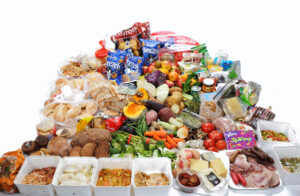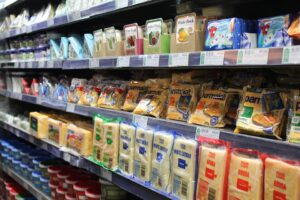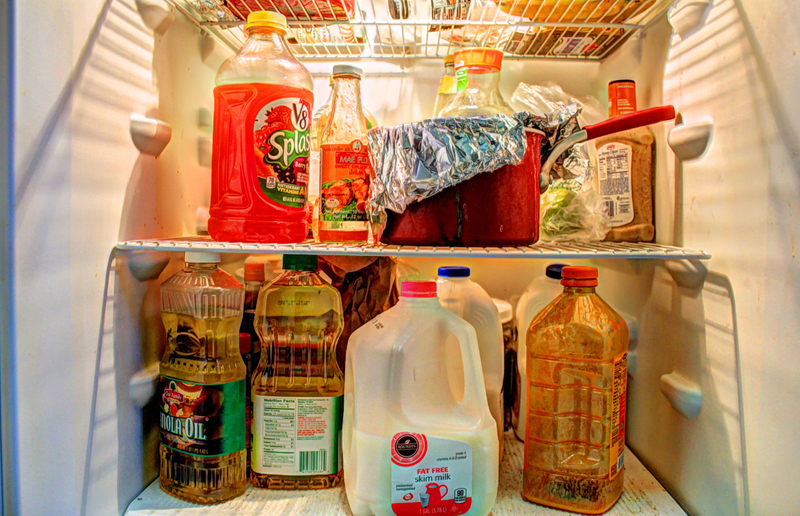Most of us have had that two-week-old gallon of milk in our fridge we weren’t too sure about. When we check the expiration date and find that it expired two days ago…we become skeptical. Hesitantly, we take a whiff…non-conclusive. Some brave people might bite the bullet and actually have a taste, but many people err on the side of caution, and discard that gallon…down the drain.
But was it really bad?
Food Waste is a Huge Problem
A 2018 study by Zach Conrad (and others) estimates that about 150,000 tons of food is tossed out in US households each day, which is about 1/3 of the daily calories that each American consumes. Growing that food uses 30 million acres of land (an area about the size of Pennsylvania), 78 million pounds of pesticide, and 4.2 trillion gallons of irrigated water.
This sort of waste not only impacts our natural resources, it also costs consumers. In a 2018 report, The Natural Resource Defense Council (NRDC) estimates that household food waste contributes to an annual economic loss of $450 for every American, or about $1800 for a family of four.

While some amount of food loss is unavoidable, there seems to be an incredible opportunity to reduce waste at the household level. This starts with encouraging conscious consumption.
There are numerous food labels that can help us make those quick, informed, choices. Many provide valuable information about what we we’re eating, where it comes from, and how and when it was produced.
But we might be trusting one label too much: the expiration date.
Expiration Dates: What You Need to Know
Expiration dates are commonly found on packaged food items, most noticeably on dairy and meat products. However, expiration dates mean something different to manufacturers and retailers. By providing information about when food was made, or how long its quality might be maintained, stores can use them to decide how long to display products, and when to pull them off the shelf.
But there’s no standardized method of product dating and thus, consumers see expiration dates in many forms. Here’s what a few of the most common ones really mean:
- “Best if Used By/Before” – used when a product will be of highest quality of flavor. Not a purchase or safety date.
- “Sell-By” – tells retailers how long to display the product for sale. It is not a safety date.
- “Use-By” – refers to the last date recommended for the use of the product while it is at its highest quality. It is not a safety date (except for when used with infant formula).
- “Freeze-By” – refers to when a product should be frozen to maintain peak quality. It is not a safety or purchase date.
None of these dates give any indication of safety to consumers. In fact, the USDA states that “except for infant formula, product dating is not required by Federal regulations.”

Even though these labels don’t actually give any indication of food safety, they are impacting consumers in a big way. A 2016 study by Norbert Wilson (and others), examined how interactions with product dating influenced consumer waste.
Researchers found that dates that seem to suggest a safety concern, like “Use-By”, may create more waste than dates that refer to the quality of products, such as “Sell-By” or “Best if Used By”. Likewise, the USDA cites consumer confusion over date labeling as a driver of household food waste.
But what can consumers do? Without standardization, we’re forced to rely on confusing labeling when making decisions about our health and well-being.
What Can We Do?
To tackle this problem, people first need to be made aware. Question the dates on food you’re considering throwing out, and evaluate the food on your own by relying on your senses to tell you whether or not it appears safe.
Unsafe food is usually discolored, or emits a foul smell…it might be obvious when your milk goes bad, but that blue cheese that’s been in the fridge for a few months might be more difficult to evaluate. In general, it’s okay to assume that food being consumed past the printed expiration date is perfectly safe, as long as no obvious signs of spoilage are present (odor, texture, flavor, or appearance).
There are also alternative shopping options worth exploring. In many parts of the country, surplus grocery stores sell food past the printed expiration dates that would otherwise be wasted. If you don’t have access to a surplus store, there are still options. Misfits Market (based in Philadelphia) aims to tackle produce waste, offering a subscription service that delivers imperfect or ‘ugly’ produce right to the doors of customers throughout the Northeast.
Tackling food waste at the household level will really be accomplished by the individual. Being more mindful of our food consumption habits and limiting waste can alleviate a huge burden on the food system, save our natural resources, and ultimately help us sustainably feed a growing population.


Finally! People need to talk more about this because so much food gets wasted because of people throwing out food because it is past their expiration dates. That does not mean that it went bad necessarily! Here is another great read I suggest people take a look at, https://www.ez.insure/landing/2021/06/use-by-sell-by-best-by-do-expirations-dates-matter/ . Kind of talks about what you mentioned, with some extra great information. What are your thoughts on it?